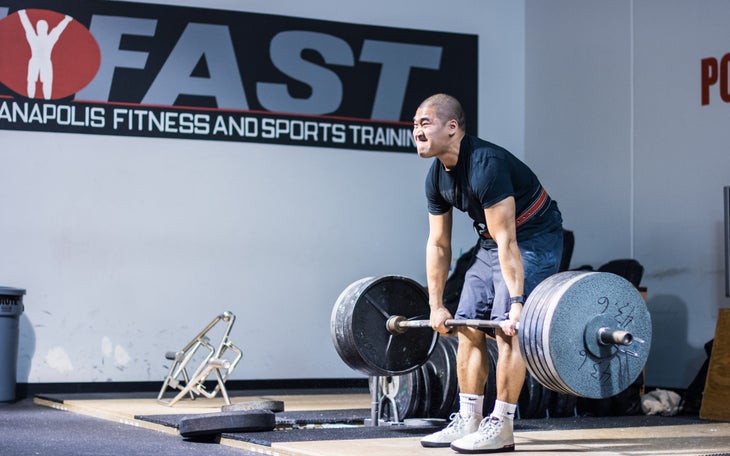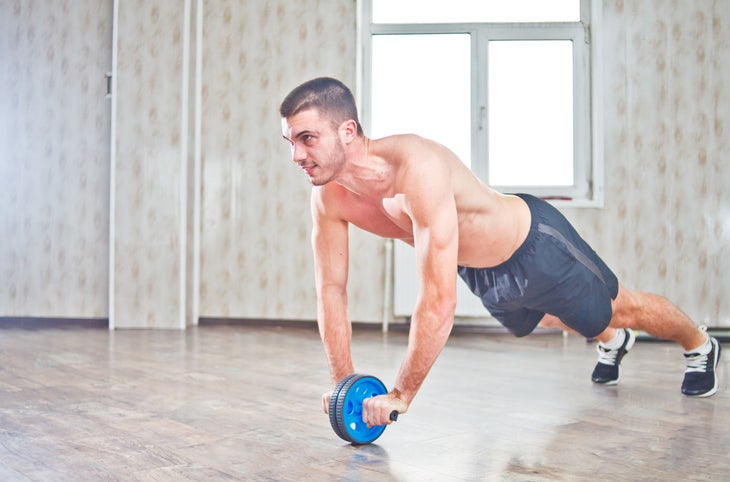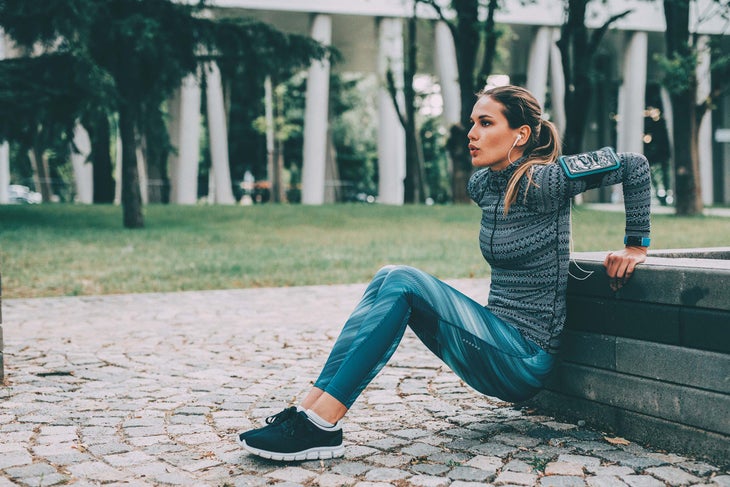Products You May Like
Get access to everything we publish when you
sign up for Outside+.
Give your legs a break: building up your upper body is one of the most overlooked ways to improve your backpacking. Dedicating some training time to your arms and trunk will yield serious benefits for your balance, power, and comfort in more demanding terrain. Perform these upper body exercises for backpackers twice a week, along with a HIIT cardio movement, like burpees, to build strength without mass.
Oblique Crunches
Oblique crunches simulate the movement of balancing quickly on moving rocks or logs. Hold a weight in one hand, your other hand on your hip and stand with your feet shoulder-width apart. Lower the weight along your side, flexing your midsection. Reverse the movement at your lowest, which puts the weight right around your knee, and make sure to move only side to side, not forward or backward. Do three sets of ten for each side with a weight that’s heavy enough that you can do the required reps while still remaining in control of the movement.

Deadlifts
Deadlifts are a large compound movement that will work every muscle on the back half of your body. Stronger posterior muscles means less strain on your back with heavier loads and longer days in the backcountry. Start with your legs spread shoulder-width apart, knees slightly bent and back straight. Grip the weight and slowly lift it off the floor, straightening your knees and keeping your spine straight. Lift until you are standing up, pulling back your shoulder blades slightly, then lower carefully back to the floor. Start with three sets of ten, using weight that pushes you to the brink of failure on the final rep.
Wood Chops
Wood chops are another great oblique exercise that also work your back and shoulders. Set a cable machine with a single handle attachment to its highest position. Face 45 degrees away from the machine and grip the handle with both hands. Pull down and twist with your core until the handle is by your waist on the opposite side of your body. Reverse the movement and do three sets of ten on each side. Not only will this help with your balance, but it will also simulate putting on your backpack, which can save your back the stress of lifting up your pack repeatedly. If you don’t have a cable machine, the movement can also be done with free weights. Do three sets of ten reps with a weight you can control throughout the whole movement.

Ab Wheel Rollouts
Ab wheel rollouts are one of the best exercises for all-around core strength. Start on your knees with your back arched and both hands on the wheel. Lower yourself slowly, keeping your arms straight until you are an inch off the ground, or as far forward as your muscles allow. As you roll out, slowly extend your body from hunched to completely straight. Reverse the movement at the bottom, flexing your abs as you roll back up to the starting position. If your back begins to hurt, stop the exercise and adjust your posture back to a neutral spine. Do three sets of ten, with minimal rest between sets. The benefit of working your abs statically—slowly and with purpose—is more control over your torso. This comes into play on steep or rocky terrain, where being able to readjust your center of gravity quickly can save you from potentially dangerous situations.

Dips
Dips work your chest and triceps, and will help you feel more stable on your hiking poles, taking some pressure off your legs and assisting you on uneven terrain or steep inclines. Start on a dip machine or bars with both arms straightened and down by your sides, your legs hanging. Bend your arms until they are at 90 degrees, lowering your body, and then straighten them, pushing your body back up. If no machine is available, use two benches, putting your legs on one and your hands on the other. Take your legs off the bench to make the exercise easier. Perform three sets of ten.
More Fitness Tips for Backpackers
The best way to build up a base of fitness for hiking: hike. But spend time working out off-trail, and you’ll go faster, feel more comfortable, and get injured less in the backcountry.
Originally published June 2018; last updated January 2022
